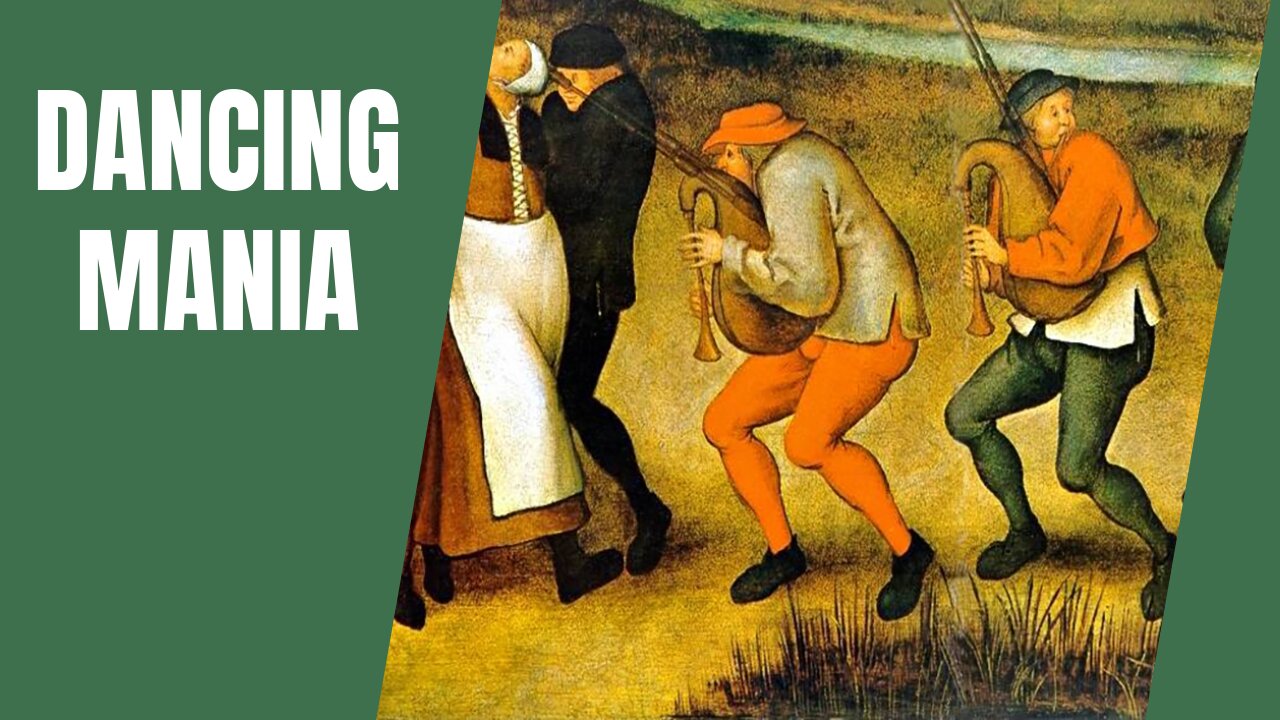Premium Only Content

The Dancing Mania: Unraveling the Mystery of Mass Hysteria
Throughout history, there have been strange occurrences that have baffled and captivated societies across the globe. One such enigmatic phenomenon is the dancing manias, also known as dancing plagues or choreomania, which emerged in various European regions during the late Middle Ages and Early Modern period.
The dancing manias first appeared in the 14th century and reached their peak in the 16th and 17th centuries. These episodes involved groups of people, often numbering in the hundreds or even thousands, who would start dancing uncontrollably in the streets. These dancing outbreaks were not lighthearted or celebratory, but rather bizarre and frenzied, lasting for days, weeks, or even months.
During the dancing manias, those affected were unable to control their movements and continued to dance despite exhaustion, dehydration, and physical injuries. These episodes often led to severe consequences, with some individuals even dancing themselves to death.
Numerous theories have been proposed to explain the dancing manias, but no single cause has been definitively established. Some scholars attribute the outbreaks to religious fervor or spiritual possession, suggesting that the dancers were engaged in a form of ecstatic ritual or seeking divine intervention. Others believe that the dancing manias were a form of mass hysteria, triggered by social and psychological factors, such as stress, anxiety, or collective delusion.
Some researchers have also pointed to possible medical explanations, including neurological disorders, such as epilepsy or encephalitis, or toxicological causes, such as ingestion of hallucinogenic substances or ergot poisoning from contaminated rye.
Regardless of the underlying cause, the dancing manias left a lasting impact on European society, influencing art, literature, and medical discourse of the time. These episodes were often interpreted as divine punishment, and religious authorities sometimes attempted to exorcise the "possessed" dancers through rituals and prayers.
The dancing manias continue to intrigue historians, psychologists, and medical researchers, sparking debates about the nature of mass hysteria and the complex interplay between psychological, social, and cultural factors in shaping human behavior.
Photo credits: Wellcome Library, London, Arnoldius, Radek Kucharski
Music theme - Trumpets in Your Ears by Wowa & Chris Rede @unminus.com
-
 LIVE
LIVE
Russell Brand
1 hour agoGaza Takeover? Trump’s Bold Plan Sparks Global Outrage – SF532
6,969 watching -
 LIVE
LIVE
Dr Disrespect
1 hour ago🔴LIVE - DR DISRESPECT - KINGDOM COME: DELIVERANCE 2 - FIRST IMPRESSION
2,690 watching -
 LIVE
LIVE
The Charlie Kirk Show
40 minutes agoGaza Thoughts + DOGE The Destroyer | Sen. Schmitt, Benz | 2.5.2025
7,963 watching -
 LIVE
LIVE
Simply Bitcoin
1 hour agoNEW REPORT: Bitcoin ETF Insider Doubles Down on UNTHINKABLE 2030 prediction! | EP 1176
190 watching -
 59:36
59:36
The Dan Bongino Show
3 hours agoTrump Shocks The World With Major Announcement (Ep. 2416) - 02/05/2025
505K647 -
 1:19:04
1:19:04
The Rubin Report
2 hours agoTrump & Netanyahu Shock with Truly Unexpected Plan for Gaza
44.5K25 -
 1:59:23
1:59:23
Steven Crowder
3 hours ago🔴 Trump's Hitlist Grows: USAID, Dept. of Education, CIA, and... Gaza?
204K258 -
 LIVE
LIVE
Grant Stinchfield
53 minutes agoThe FBI Withholds 5000 Names of Agents & Employees Who Hunted Down J6'ers
268 watching -
 LIVE
LIVE
LFA TV
16 hours agoMA-GAZA STRIP! | LIVE FROM AMERICA 2.5.25 11am
6,592 watching -
 2:14:55
2:14:55
Matt Kohrs
10 hours agoBreaking Market News, Earnings Review & Live Trading $1M || The MK Show
66.9K1